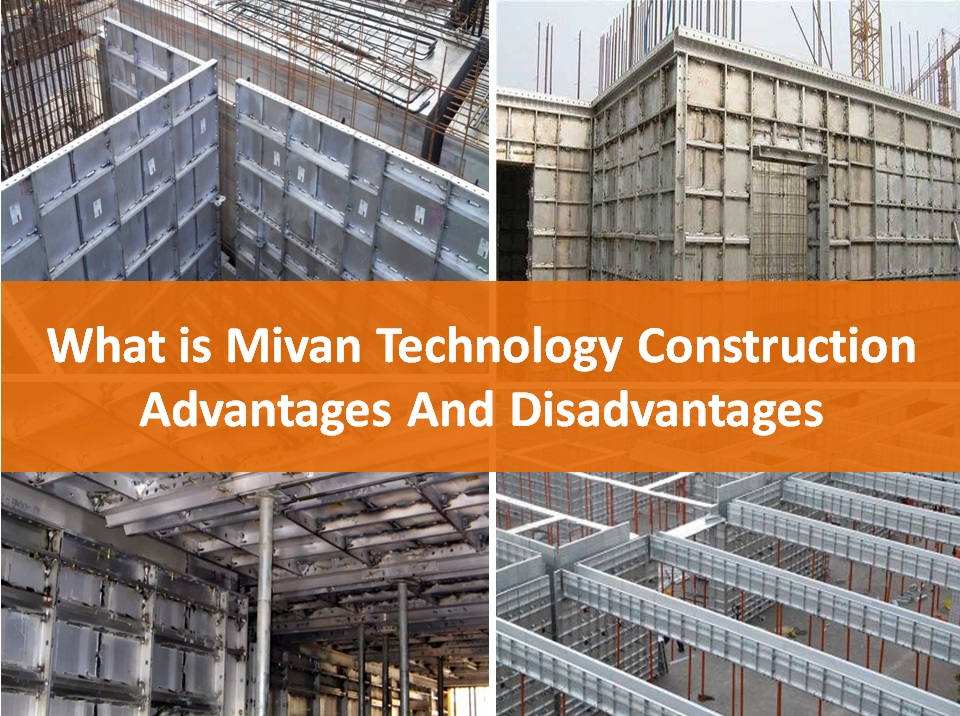What Is Mivan Technology Construction, Advantages And Disadvantages?
Arun Kumar 23 April 2022
The population of India's cities is rapidly increasing, as is the need for urban housing. However, the building industry has been unable to keep pace with these rapidly increasing demands. In response to this never-ending housing demand, the Indian government has begun to advocate large-scale affordable housing projects as a solution to the urban housing shortage.
The government and the real estate industry are placing an increasing emphasis on the utilisation of cutting-edge building methods in order to meet the rising need for affordable housing for everyone. The Mivan Technology is also a good choice. Let's take a closer look at the notion, its advantages and disadvantages.
What is Mivan Technology Construction?
In reality, Mivan is a 1990s-era aluminium formwork system produced by Malaysia's Mivan Company Ltd. This new way of working is ideal for building huge numbers of residences at a quicker rate.
It is possible to build several homes at a rapid pace with Mivan shuttering since this formwork building method runs the structural system in a single pour. Plastering is no longer required when the formwork is removed since the high-quality concrete finish is formed with perfect tolerances and verticality.
Three distinct phases are required for this kind of construction:
- Setting Up The Wall Reinforcing Steel
In order to create a structure and sustain the concrete until it reaches 50% of its strength, reinforcing steel is utilised. The factory-made steel mesh is immediately built on the building site, and the aluminium formwork is cast around it.
- Placement Of Formwork of Aluminium
Along the wall reinforcing steel, prefabricated floor slabs, and room-sized walls are assembled in the form of aluminium formwork The aluminium alloy slabs are lightweight and simple to work with, thanks to their high level of precision.
Other elements like chajjas, stairs and façade panels are also incorporated into these pre-integrated rooms, which include windows, doors and ductwork. As soon as the concrete structure is ready for use, these forms are disassembled using the pin and wedge procedure.
- Pouring Concrete
High-quality concrete is poured into the forms after they have been cast, and the concrete takes on the shape and form of the cast. For a hard-concrete construction supported by wall reinforcing steel, the cast is subsequently removed. There is very little waste from the building site when using these aluminium forms since they can be re-used almost 250 times.
MIVAN is one of the most beneficial contemporary building technology that has been launched in India. Using this technique, several unit projects may be built quickly, and efficiency is increased.
Mivan Technology Advantages and Disadvantages
The lack of construction workers and rising expenses have compelled developers to experiment with novel methods of building. Using Mivan, high-rise structures with normal floors may save time and money by using this technology instead of traditional column beam construction. However, there are some disadvantages to this technology as well, so let's examine both the benefits and drawbacks of Mivan.
Aspects That Make MIVAN Technology Unique
- Rapidity - Cuts building time in half as compared to traditional methods.
- Demands- An established technique and procedures make this technology less labour-intensive, and it removes the need for brickwork and rendering, which are labour-intensive.
- Less Maintenance -This approach decreases the likelihood of seepage by using free flow concrete and avoiding building joints, resulting in less maintenance.
- Smooth finish- As a result of the homogeneity of Mivan construction, all walls and slabs have a smooth surface that eliminates the need for further plastering.
- Higher carpet area- In comparison to more conventional building methods, it allows for greater removal of carpet area.
- Earthquake resistant- Safer in case of a big earthquake due to the increased seismic resistance of the building. This is due to the fact that Mivan-built buildings are a single, solid concrete unit.
While this formwork has a lot going for it, it also has several serious drawbacks that should not be overlooked. Is this what you're looking for?
- Costly- Formworks made of aluminium are substantially more costly than those made of wood.
- Visible finishing lines- Because of the tiny size of the components, the final building may have a number of finishing lines visible on the concrete surfaces. This is a normal occurrence.
- No scope of alterations- All of the members are cast in RCC, which means that no tweaks or alterations may be made.
- Possibility of contraction cracks- Walls and slabs that have shrunk may develop cracks as a consequence of contraction. Fly ash may be used to reduce the heat hydration, or control strips can be installed on the structure to avoid this.
Get in Touch With us
Register here and Avail the Best Offers!!





